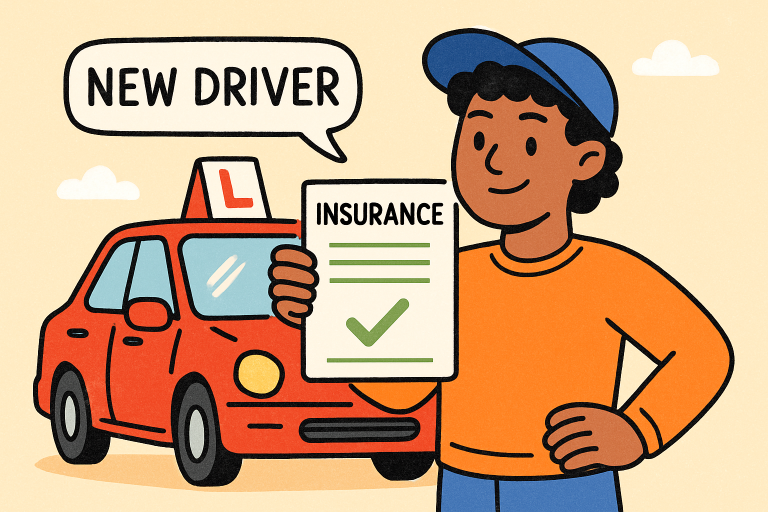Learning to drive opens up a world of independence and adventure, but with it comes the vital task of understanding car insurance. Whether you’re taking the wheel for the first time or buying your very first vehicle, car insurance is crucial for your financial security and peace of mind. With so many terms, options, and providers, the process can feel overwhelming. This guide aims to unravel the basics and key details so you can make confident, informed decisions as you hit the road. If you’re searching for reputable providers, consider the AARP Auto Insurance Program for competitive options tailored to new and experienced drivers alike. Beyond fulfilling legal requirements, car insurance ensures you aren’t left facing massive bills after unexpected accidents, theft, or weather-related catastrophes. For first-time drivers, the right coverage protects your hard-earned savings while helping you drive with greater confidence and responsibility. This introductory guide will cover the essential types of insurance coverage, what determines your premiums, and smart ways to reduce your costs without sacrificing protection. Along the way, we’ll highlight not only what to do, but also what to avoid as you get insured for the first time. The more you know now, the better your chance of securing affordable protections tailored to your needs and your budget. Let’s explore the must-knows of car insurance for first-time drivers.
Why Car Insurance Is Essential
Car insurance is more than just a legal hoop to jump through—it’s a fundamental protection for drivers. Accidents, vehicle damage, theft, or natural disasters can happen unexpectedly. Car insurance safeguards you from the potentially overwhelming financial consequences of these events, whether you’re at fault or not. In many states, driving without insurance can bring serious legal penalties, hefty fines, and even suspension of your driving privileges. Without proper coverage, you risk facing significant out-of-pocket costs for repairs, medical bills, property damage, and even lawsuits. Insurance not only shields your finances but also supports victims and helps cover repairs or medical care, creating a safety net for everyone on the road. For more information about legal requirements and how car insurance works state by state, check out this helpful guide from Bankrate.
Types of Car Insurance Coverage
Understanding what your policy covers is key to getting the right protection. The most common types of car insurance coverage include:
- Liability Insurance: Covers injury and property damage expenses to others if you’re at fault in an accident. Most states require a minimum amount.
- Collision Coverage: Pays for damages to your car caused by a crash, regardless of who is at fault.
- Comprehensive Coverage: Protects against losses not caused by collisions—think theft, vandalism, or weather damage.
- Uninsured/Underinsured Motorist Coverage: Steps in when you’re hit by a driver with little or no insurance to cover your costs.
- Personal Injury Protection (PIP): Covers medical expenses for you and your passengers, no matter who is at fault.
Factors Affecting Insurance Premiums
Numerous variables determine how much you pay for car insurance. For new drivers, these factors are important to understand:
- Age and Experience: Young or inexperienced drivers generally pay more because they are statistically more likely to be involved in accidents.
- Vehicle Type: High-performance, luxury, or newer vehicles often cost more to insure due to repair costs and theft risk.
- Driving Record: Violations, accidents, and claims increase premiums; a clean record works in your favor.
- Location: Urban areas with denser traffic and higher rates of accidents or theft lead to higher premiums than rural areas.
Tips to Lower Your Premium
First-time drivers aren’t powerless when it comes to insurance costs. Here are some actionable steps to help keep your premiums manageable:
- Maintain Good Grades: Many insurers reward students who achieve high marks with discounts.
- Complete a Defensive Driving Course: Taking an accredited driving safety course not only makes you safer but can also lower your rates.
- Choose a Safe Vehicle: Cars with advanced safety features and strong crash-test ratings generally cost less to insure.
- Bundle Policies: If your family has homeowners or renters insurance, bundling with auto coverage often saves money.
Steps to Obtain Car Insurance
Securing your first car insurance policy is a straightforward process when you’re prepared:
- Gather Your Information: Include your driver’s license, the vehicle’s details, and basic personal information.
- Assess Your Needs: Determine which coverage types and limits are most appropriate for your risk profile and budget.
- Shop for Quotes: Compare offers from various insurers to find the best price-coverage combination. Online quote tools can be particularly helpful here.
- Review Policy Details: Double-check the terms, deductibles, and exclusions before signing on the dotted line. Don’t hesitate to ask questions.
Common Mistakes to Avoid
Even seasoned drivers can slip up when choosing insurance. Avoid these pitfalls to side-step costly mistakes:
- Underinsuring: Choosing only the bare minimum to save money can leave you exposed after a major accident.
- Not Disclosing Information: Providing incomplete or inaccurate information can result in denied claims.
- Overlooking Discounts: Always ask your agent about student discounts, safe driver incentives, and policy bundles.
Understanding Policy Terms
Insurance comes with a language all its own. A few key terms to know:
- Premium: The amount you pay (monthly or annually) for your insurance policy.
- Deductible: Your out-of-pocket responsibility before insurance coverage kicks in.
- Exclusion: Conditions or situations specifically not covered by your policy.
Conclusion
Car insurance doesn’t have to be intimidating—if you understand the basics, you can confidently protect yourself, your vehicle, and others on the road. Take the time to assess your needs, compare options, and keep your record clean. This is the foundation for a safe and responsible driving journey, no matter where the road leads.
